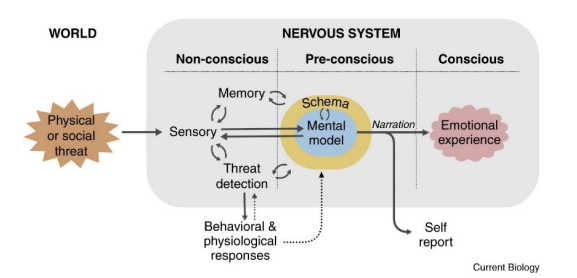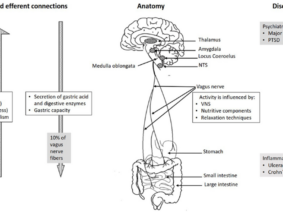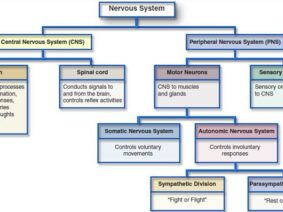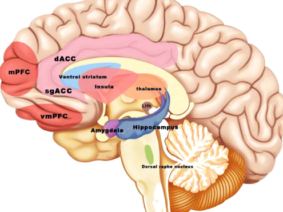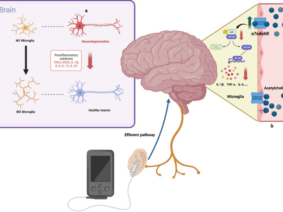Emotions are an integral part of human existence, significantly impacting mental health and overall well-being. However, when emotional functioning becomes maladaptive, it can lead to various disorders such as anxiety and depression, posing significant challenges for individuals and society as a whole. Recent research has highlighted the role of neurobiology in emotional processing, particularly emphasizing the involvement of the vagus nerve in regulating emotional states.
Understanding Emotional Disorders: Depressive and anxiety disorders are among the most prevalent mental health conditions globally, contributing significantly to the burden of disease. These disorders manifest in specific neural circuits, affecting emotional experiences and cognitive functioning. Emotional responses are shaped by a complex interplay of genetic predispositions and environmental factors, highlighting the potential for targeted interventions to improve emotional well-being.
Neuroscientific Theories of Emotion: Several neuroscientific theories provide insights into the biological basis of emotions. The LeDoux model emphasizes the role of neural pathways in processing emotional stimuli, while the theory of constructed emotion suggests that emotions are dynamically constructed based on contextual and physiological cues. Additionally, the polyvagal theory highlights the significance of the vagus nerve in regulating emotional responses through its connections with the brain and body.
The vagus nerve connects subdiaphragmatic and supradiaphragmatic areas to modulate emotional processing through its intricate network of afferent and efferent fibers. The vagus nerve plays a crucial role in the bidirectional communication between the brain and the body, influencing emotional regulation and interoceptive functioning.
- Afferent Pathway: The vagus nerve serves as a major conduit for transmitting sensory information from the body to the brain. Afferent signals generated in peripheral organs, such as the heart, lungs, and gastrointestinal tract, travel through the vagus nerve to reach the brainstem nuclei, including the nucleus of the solitary tract (NTS). From the NTS, these signals project to various cortical and subcortical structures involved in emotional regulation, such as the amygdala, hippocampus, cingulate cortex, and prefrontal cortex.
- Efferent Pathway: The vagus nerve also carries efferent signals from the brain to the body, regulating autonomic functions and influencing emotional responses. By modulating parasympathetic activity, the vagus nerve can impact heart rate, respiratory rate, and gastrointestinal functions, which are closely linked to emotional states.
- Emotional Regulation Network: The vagus nerve’s connections to key brain regions involved in emotional processing, such as the amygdala and prefrontal cortex, allow it to modulate emotional responses and regulate emotional states. Stimulation of the vagus nerve, either through techniques like transcutaneous auricular vagus nerve stimulation (taVNS) or cervical vagus nerve stimulation (cVNS), can influence neural activity in these regions and potentially improve emotional well-being.
Overall, the vagus nerve acts as a vital link between the brain and the body, playing a significant role in modulating emotional processing and regulating emotional states through its complex neural pathways and connections.
Transcutaneous Auricular Vagus Nerve Stimulation (taVNS): taVNS has emerged as a novel neuromodulation technique that targets the auricular branch of the vagus nerve to improve emotional states. By applying electrical impulses to specific areas of the ear, taVNS modulates neural activity in regions involved in emotional processing, offering a non-invasive approach to treating emotional disorders. Studies have demonstrated the efficacy of taVNS in enhancing response selection, inhibiting fear responses, and improving functional connectivity in individuals with depression.
Potential Applications of taVNS: Research suggests that taVNS holds promise for the treatment of various emotional disorders, including depression, anxiety, and PTSD. By modulating brainstem activity and influencing neurotransmitter systems, taVNS may offer a multifaceted approach to improving emotional regulation and reducing symptoms associated with these conditions. Furthermore, taVNS shows potential in managing stress responses and promoting overall emotional well-being in diverse populations.
- Treatment for Depression: Studies have shown that taVNS interventions can lead to improvements in depression-associated symptomatology . Functional connectivity in depressed patients has been observed to improve after taVNS treatment, indicating potential benefits for individuals with depression. Additionally, taVNS has been associated with a reduction in the severity of depression symptoms in patients diagnosed with depression.
- Management of Anxiety: Pilot interventions using taVNS have demonstrated positive effects on combat veterans with PTSD, suggesting that taVNS can influence the systems underlying emotional dysregulation and improve emotional states in individuals with anxiety disorders. Furthermore, taVNS has been shown to improve sleep depth and stability in veterans with PTSD, highlighting its potential in managing anxiety-related symptoms.
- Stress Reduction: In a pilot intervention with World Trade Center survivors who had PTSD, taVNS was found to reduce stress responses and hyperarousal, indicating its potential in mitigating the effects of chronic stress and trauma.
- Potential Mechanisms: The stimulation of the vagus nerve through taVNS can modulate brainstem activity, affect noradrenergic physiological markers, and influence brain-microbiota communication, which in turn can impact emotional regulation, social behavior, and stress responses. By targeting key brain regions involved in emotional processing, taVNS may offer a non-invasive and effective approach to improving emotional well-being in individuals with emotional disorders.
Transcutaneous auricular vagus nerve stimulation represents a groundbreaking approach to enhancing emotional well-being through targeted neuromodulation. By leveraging the intricate connections of the vagus nerve and its influence on emotional processing, taVNS offers new avenues for the treatment of emotional disorders. Continued research in this field holds the promise of advancing our understanding of the neurobiology of emotions and developing innovative therapies to support mental health and resilience.
References:
Aranberri Ruiz A. Transcutaneous Auricular Vagus Nerve Stimulation to Improve Emotional State. Biomedicines. 2024; 12(2):407. https://doi.org/10.3390/biomedicines12020407
